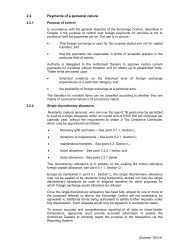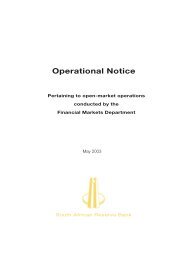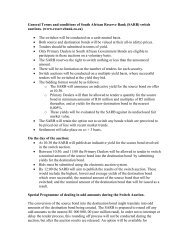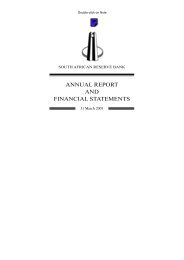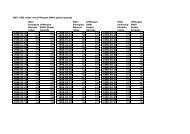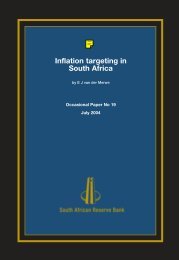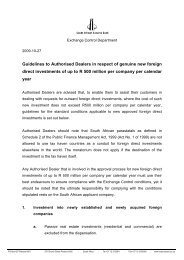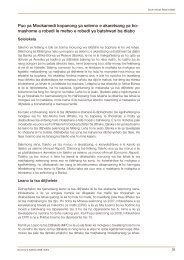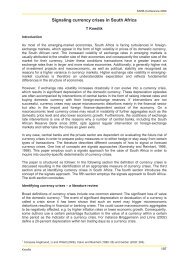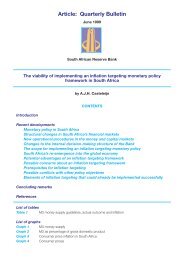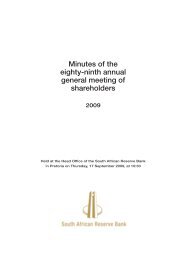Notes on a composite leading indicator of inflation
Notes on a composite leading indicator of inflation
Notes on a composite leading indicator of inflation
You also want an ePaper? Increase the reach of your titles
YUMPU automatically turns print PDFs into web optimized ePapers that Google loves.
According to Table 1 the turning-points <strong>of</strong> the reference data series show <strong>on</strong>ly a few deviati<strong>on</strong>s from<br />
those <strong>of</strong> the more comprehensive overall inflati<strong>on</strong> rate. The <strong>on</strong>ly significant difference occurred when<br />
the overall inflati<strong>on</strong> cycle <strong>of</strong> 1989-1990 was not accompanied by a corresp<strong>on</strong>ding cycle in either the<br />
reference or the underlying data series. This can mainly be explained by the str<strong>on</strong>g c<strong>on</strong>tributi<strong>on</strong> <strong>of</strong> a<br />
rise <strong>of</strong> 3 percentage points in the mortgage b<strong>on</strong>d rate between November 1988 and October 1989. In<br />
the period 1994-1995 the overall inflati<strong>on</strong> series again experienced a cycle that was not clearly<br />
reflected in the reference data series and even less so in the underlying inflati<strong>on</strong> series. The major<br />
c<strong>on</strong>tributi<strong>on</strong> to this difference was an increase in the prices <strong>of</strong> food resulting from the lower-thanexpected<br />
growth in agricultural output <strong>on</strong> account <strong>of</strong> the withholding <strong>of</strong> livestock from the market to<br />
replenish herds, as well as frost damage to vegetable producti<strong>on</strong> and drought-related damage to the<br />
wheat crop.<br />
Table 1. Turning-points <strong>of</strong> inflati<strong>on</strong>



